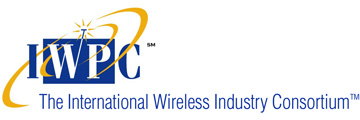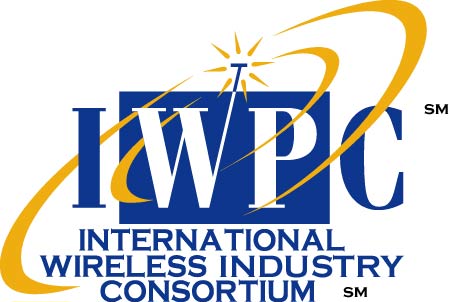What Role Will mmWave Technologies Play in 5G?
When And How Will 5G Be Deployed? Will Extreme Mobile Broadband Compromise Massive Machine Type Connectivity? Exploring New and Emerging Use-Cases, Trials, Opportunities, Challenges and Technology Innovation.
Hosted by:
SOLD OUT
When
November 16-18, 2016
Introduction
Spectrum is a finite resource, so if it can be exploited, mmWave offers much promise for future cellular networks. Until now, increasing performance has relied on increasing spectral efficiency by using OFDM, MIMO, efficient channel coding, and interference coordination, however, increased spectral efficiency is not enough to guarantee high per-user data rates, so Millimeter wave (mmWave) cellular systems, operating in the 10-300GHz band are being researched in order to deliver multiple gigabit-per-second data rates. Enabling mmWave cellular systems is not as simple in practice, as free-space path loss is much larger in mmWave due to the higher carrier frequency, scattering is less significant which reduce the available diversity, and non-line-of-sight paths are weaker making blockage and coverage holes more pronounced.
Workshop Goals
- Evaluate the coverage and capacity limitations of mmWave systems
- Understand which use-cases will effectively exploit mmWave technologies
- Explore pre-standards proposals, trials and deployments
- Assess routes and roadmaps to achieving global standards based systems
- Understand the importance of mmWave in future 5G networks
Agenda
|
DAY 1 Wednesday
|
|
|
||||||||
| 7:00 PM |
Evening reception
- Sponsored by
|
Registration at hotel |
||||||||
|
DAY 2 Thursday
7:00 AM |
Breakfast and Registration continues |
Hotel
|
||||||||
|
8:00 AM |
Welcome and Introductions
|
|
||||||||
|
8:30 AM |
Host Keynote Opening Remarks and Presentation
|
Verizon & 5G
Associate Fellow
|
||||||||
|
10:00 AM |
Networking Break |
|||||||||
10:40 AM |
Carrier Perspectives
|
mmWave and 5G:
Senior Scientist
A Path to 5G
Distinguished Engineer
|
||||||||
|
12:00 Noon |
Networking Lunch |
|
||||||||
|
1:00 PM |
Equipment Vendor Perspectives
|
The 5G mmWave Revolution
Head, NAM Radio Systems
5G at mmw: Features and Performance Principal Solution Consultant
mmWave Success and Evolution Head, Marketing
|
||||||||
|
3:00 PM |
Networking Break |
|||||||||
|
3:40 PM |
Equipment Vendor Perspectives, continued |
Use Cases, Technical Challenges and Standards Progress of mmWave Communication
Sr. Director
Modeling what matters: Keeping a correct focus on 5G
Lead Technologist
|
||||||||
5:00 PM |
End of Day Panel |
Host and invited Carriers
|
||||||||
|
5:45 PM |
Adjourn for Day |
|
||||||||
|
7:30 PM |
Networking Dinner - Palacio Restaurant |
bus to depart from hotel at 7:00 pm |
||||||||
|
DAY 3 Friday 7:00 AM
|
Networking Breakfast |
|||||||||
|
8:00 AM |
Technology Enablers
|
mmWave in 5G C-RAN:
VP Marketing
Holographic Beamforming Technology for Millimeter Wave 5G Applications
Chief Technical Officer
The Last (mile) will be First - Enabling Fixed Wireless and 5G Base Stations with Active Antenna Apertures for 2017 Deployment
CEO
|
||||||||
|
10:00 AM |
Networking Break |
|||||||||
|
10:30 AM |
Technology Enablers
|
mmWave CMOS Circuits for 5G Backhaul and Access
Program Manager - Wireless Technologies
Role of Silicon Technologies in mmWave 5G radio interface
Director, Strategic Applications
|
||||||||
11:30 am |
Technology Enablers - User Equipment Semiconductor Panel |
Invited:
|
||||||||
|
12:00 Noon |
Networking Lunch |
|
||||||||
|
1:00 PM |
Technology Enablers, continued
|
Millimeter-Wave Technologies and Architectures for Reduced-Complexity Measurements
Technology Fellow Director
Bluetest on 5G
Director, Business Development
Deciphering the Complexity of Testing the RAN in 5G Era
Director, Business Development
5G Power Amplifier Characterization
Senior Application Engineer
|
||||||||
|
3:00 PM |
Networking Break |
|||||||||
|
3:30 PM |
Technology Enablers, continued
|
On-Board and On-Chip mmWave Antennas
Professor
|
||||||||
4:00 PM |
Closing Panel |
Host and invited Service Providers, OEMs and Technology Enablers
|
||||||||
5:00 PM |
Meeting Adjourn |
|
FAQs
- What is the deadline for presentation/handout materials?
- What can I do to prepare for speaking an at IWPC workshop?
- Who are the attendees?
- What are the costs/registrations fees?
- Hotel information?
- What are the travel options from the airport to the hotel?
- Are there any audiovisual requirements?
- Will business cards be collected?
- What is the dress code?
- How will handout materials be provided?
- What is the deadline for
presentation/handout materials?
Deadline for electronic version of presentation/handout materials: Friday, November 4th, 2016.
- What can I do to prepare for speaking an at IWPC workshop?
Click on the link below for a short video guide regarding preparing for and improving your IWPC presentation:
- Who are the attendees?
- We do not permit the Press.
- We do not permit Analysts.
- We do not permit Consultants.
- We do not permit 3rd party sales reps.
- We only permit "first hand knowledge experts" in business and technology issues, prepared to contribute to the discussion.
- What are the costs/registrations fees?
ALL Hosts, Speakers, Panel Members and Attendees will be asked to cover out-of-pocket workshop costs such as conference room costs, food (Social Reception plus First Day breakfast/lunch/dinner plus Second Day breakfast/lunch plus Breaks), audio/visual costs, etc.
These costs will be $989 (USD) per person. (For IWPC Members only.)
ALL Hosts, Speakers, Panel Members and Attendees will be asked to pay this fee in advance with either Visa, MasterCard, American Express, cash, personal check or business check. Make checks payable to IWPC.
- Hotel information?
Doubletree by Hilton
2050 Gateway Place
San Jose, CA 95110
Phone: 408-453-4000
Hotel WebsiteThe IWPC room block rate is $249.00.
The cut-off date for reservations is Monday, October 24, 2016. After that date, rooms cannot be guaranteed at the IWPC rate. You can make your reservations on-line at: https://resweb.passkey.com/go/IWPCNovember
- What are the travel options from the airport to the hotel?
Directions and transportation options will be posted as soon as possible.
- Are there any audiovisual requirements?
A Computer Projector will be available for the speakers.
In addition, we audiotape all presentations and the interactive discussions. Post workshop, presentations are made available to IWPC Members on the IWPC WEB site, along with “recordings” of all presentations and panel sessions.
- Will business cards be collected?
Business cards will be collected at the door from all attendees. We will make copies of these cards, which will be available to all who provided a business card.
- What is the dress code?
Business casual suggested. No ties, please!
- How will handout materials be provided?
For ALL IWPC members:
All IWPC members are invited to submit materials to be included in the online workshop folder in the IWPC Research Library. This should NOT BE SALES MATERIALS. Rather, we suggest it contain technical information about your technology as it relates to the workshop topics.
For all companies who will be making a presentation at the Workshop:
You are invited to submit an advance copy of your presentation, complete with graphics and illustrations.
These materials will be included on the IWPC website Research Library.
Please submit these materials either by email, as a Word for Windows file, Power Point files or PDF files.
- Go to www.iwpc.org
- Click on IWPC Activities Tab
- Under Workshops: What Role Will mmWave Technologies Play in 5G?
- Click on Submit Presentation Proposal. Complete the form and attach your presentation.
- Once we receive your presentation we will send an email confirmation.
AS BACKUP, PLEASE BRING AN ELECTRONIC COPY USB STICK WITH YOU!







